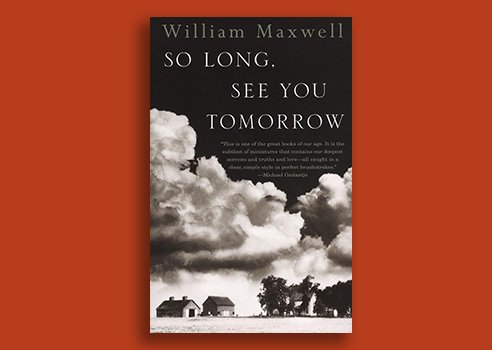Reading time: About 1 minute
I like to share interesting pieces of figurative language I encounter in my reading. I write today about similes and metaphors from William Maxwell…
I had never heard of William Maxwell until a client introduced him to me. Although long dead (Maxwell’s dates are 1908-2000) he was an American editor, novelist, short story writer and memoirist.
He served as a fiction editor at The New Yorker from 1936 to 1975. Some 39 years! He was a legendary mentor to many of the most prominent authors of his day including Vladimir Nabokov, John Cheever, Mavis Gallant and Eudora Welty.
His very fine book, So Long See You Tomorrow has another twist to make it memorable. It focuses on the flu pandemic of 1918, making it eerily appropriate for today. (In fact, both Maxwell and his mother suffered from the flu in that terrible year and while the 10-year-old Maxwell survived, his mother died.)
What I like best about Maxwell’s writing is his utter clarity. The sentences fairly sparkle on the page. But he also has considerable flair with figurative language as well. Here are my favourite examples:
- The house was too new to be comfortable. It was like having to spend a lot of time with a person you don’t know very well.
- The mailboxes too are on posts and look like wading birds.
- With their heads almost touching, his father and Mr. Wilson study the difficulty [with a car]. Wrenches and pliers pass back and forth between them with as much familiarity as if they owned their four hands in common.
- Mostly the lie curled together in what is not a very large bed sleeping the sleep of stones.
- There was enough self-control in that household for six families.
- He is lying on his left side, in the fetal position, as if he is trying to get out of this world by the way he came into it.


